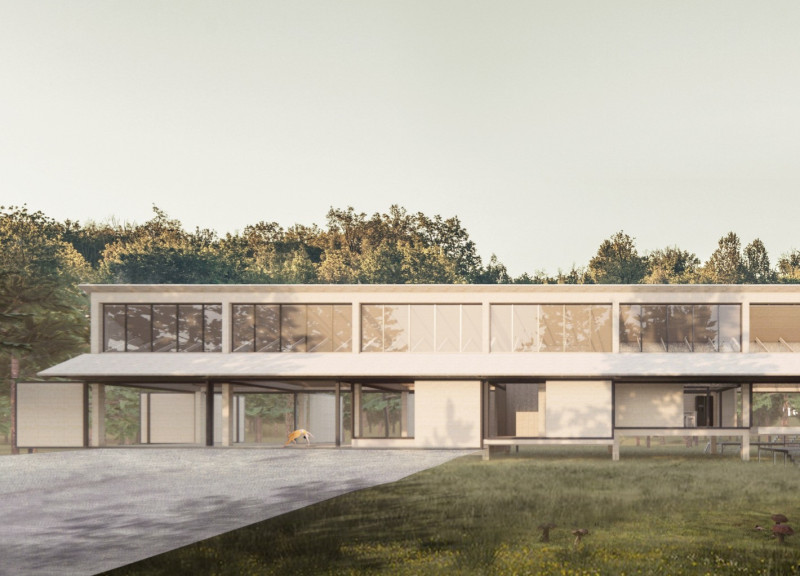5 key facts about this project
The architecture is characterized by a harmonious relationship with its surrounding environment. The site selection appears deliberate, with consideration given to natural light, landscape integration, and the local climate, contributing to a design that feels both contemporary and respectful of its locale. Elements such as green roofs, large windows, and open floor plans are employed to enhance this connection, promoting a seamless flow between indoor and outdoor spaces. The structure invites the landscape into its folds, utilizing terraces, gardens, or balconies that extend the living or working areas outward, blurring the boundaries typically found in conventional design.
Materiality in this project is central to its identity, demonstrating a keen awareness of sustainability and aesthetic appeal. The use of materials may include locally-sourced stone, timber, glass, and metals, each selected not only for their visual qualities but also for their performance and longevity. The textures and colors of these materials are thoughtfully curated to foster a sense of warmth and comfort within the structure while ensuring durability against environmental elements. This intentionality in material selection helps to reduce the carbon footprint of the building, reflecting a growing commitment within the architectural community to prioritize eco-friendly practices.
In terms of design outcomes, the project incorporates several innovative approaches that stand out in contemporary architecture. For instance, the incorporation of passive design strategies may enhance energy efficiency, using natural ventilation and daylighting to minimize reliance on artificial heating and cooling systems. Likewise, the layout may reflect an understanding of the user experience, with spaces designed to accommodate movement and activities naturally. Open-plan areas might contrast with more intimate spaces, allowing for both collaboration and privacy as needed.
Unique design features could include sculptural elements or modular components that enhance both functionality and aesthetic appeal. For example, integrated shelving, custom furniture, or adaptable spaces provide flexibility for various uses over time, illustrating an understanding of evolving needs. Additionally, the project might employ smart technology, further enhancing user experience through automation and responsive systems that adjust to environmental variables.
The overall aesthetic appears to embody a modern sensibility, characterized by clean lines, open spaces, and an emphasis on natural light. The interplay of different materials creates a dynamic visual experience, guiding the observer through the narratives conveyed by the architecture. Color palettes are likely subdued, promoting tranquility and focus within the designed environment.
Ultimately, what makes this architectural project particularly noteworthy is its comprehensive approach to design and functionality. The conscientious blend of context, user needs, sustainability, and aesthetics speaks to the growing sophistication within the architectural field. As prospective readers intrigued by this project delve deeper, they are encouraged to explore architectural plans, architectural sections, and architectural ideas that reveal the intricacies of the design process. Engaging with these elements will provide richer insights and a greater appreciation for the thoughtful craftsmanship invested in this architectural endeavor.


























